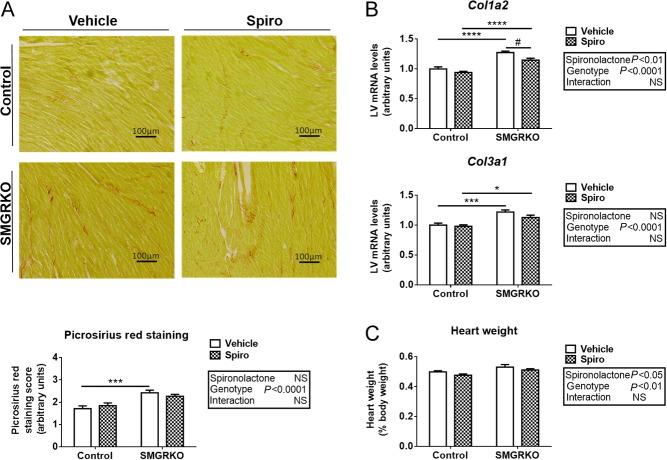Figure 7.
Spironolactone attenuates the increase in pro-fibrotic gene expression in male SMGRKO mice. Representative images of picrosirius red/fast green staining of sections of formalin fixed paraffin embedded hearts from male SMGRKO mice and control littermates treated from birth with the MR antagonist spironolactone or vehicle. Assessment of picrosirius red staining in 8-week-old mice shows that spironolactone treatment (chequered bars) did not prevent the increase in interstitial collagen in LV of SMGRKO mice compared to vehicle-treated controls (white bars). 4 fields of view were scored from the LV of each mouse by an investigator blind to genotype (scoring system described in ‘Materials and methods’ section) (N = 10–11). (B) Levels of mRNA-encoding collagen type 1α2 (Col1a2) and collagen type 3α1 (Col3a1) were measured in LV of 8-week-old mice. Spironolactone attenuated the increase in Col1a2 mRNA levels in SMGRKO mice (N = 10–13). (C) Heart weight, expressed relative to body weight, was increased in 8-week-old male SMGRKO mice compared with controls, irrespective of spironolactone treatment. Spironolactone reduced heart weight in both genotypes compared with vehicle treated mice (N = 10–18). Data are means ± s.e.m. and were analysed by two-way ANOVA (boxes) followed by Tukey’s multiple comparisons test, * or #P < 0.05, **P < 0.01, ***P < 0.001, ****P < 0.0001. *Genotype effect relative to control. #Spironolactone effect, relative to vehicle.

 This work is licensed under a
This work is licensed under a 